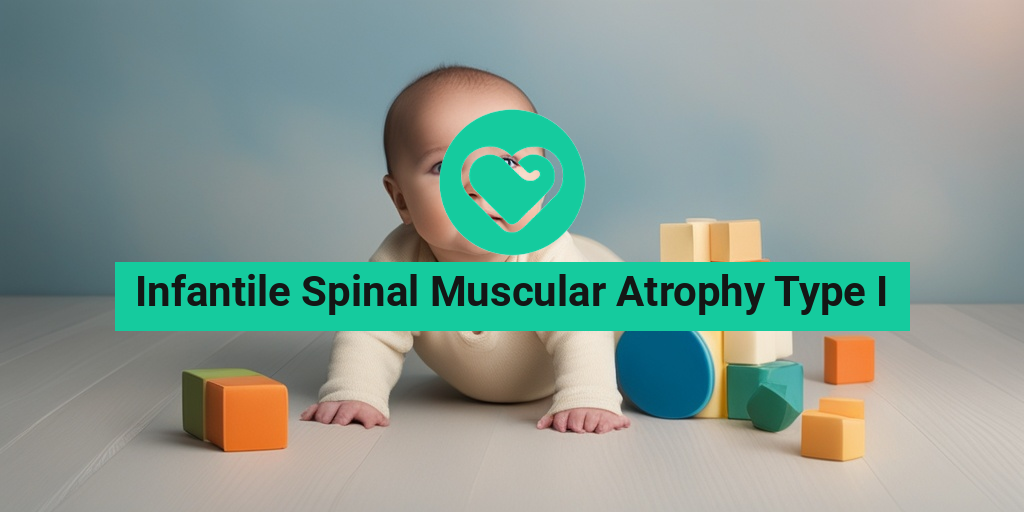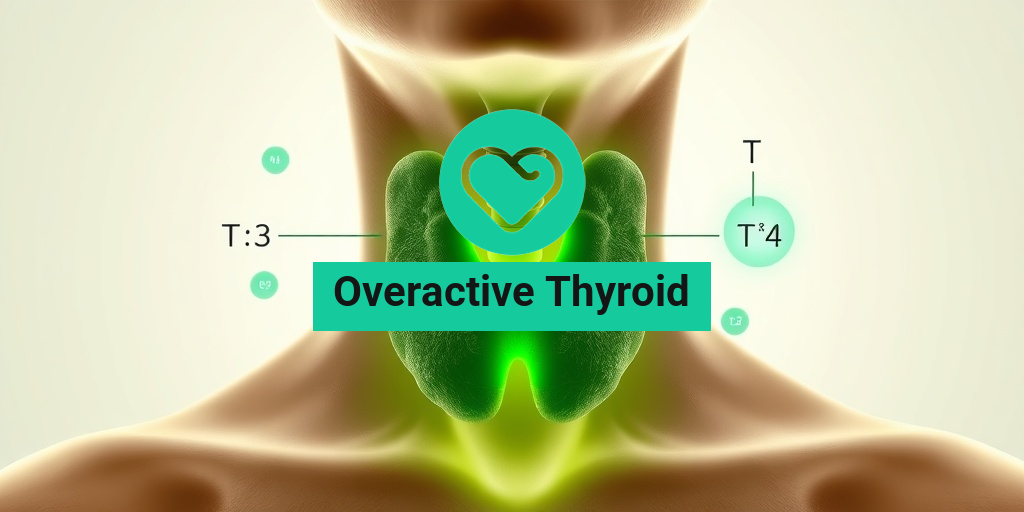What Is Infantile Spinal Muscular Atrophy Type I?
Infantile Spinal Muscular Atrophy Type I, also known as Werdnig-Hoffmann disease, is a rare and severe genetic disorder that affects the nerve cells responsible for controlling voluntary muscle movement. It is the most severe form of Spinal Muscular Atrophy (SMA), a group of conditions that affect the spinal cord and nervous system.
SMA Type I is characterized by progressive muscle weakness and wasting, particularly in the voluntary muscles such as those used for crawling, walking, and head and neck control. This condition is usually diagnosed in infancy, typically within the first six months of life, and is often fatal if left untreated.
Causes and Inheritance
Infantile Spinal Muscular Atrophy Type I is caused by a mutation in the SMN1 gene, which codes for the survival motor neuron 1 protein. This protein is essential for the survival of motor neurons, which are responsible for transmitting signals from the brain to the muscles.
The condition is inherited in an autosomal recessive pattern, meaning that a child must inherit two copies of the mutated gene (one from each parent) to develop the condition. Carriers of the mutated gene, who have one copy of the gene, are usually asymptomatic but can pass the gene to their offspring.
Understanding SMA Type I Symptoms
The symptoms of Infantile Spinal Muscular Atrophy Type I typically appear within the first few months of life and progress rapidly. The most common symptoms include:
- Floppy or limp muscles, particularly in the arms and legs
- Weakness or paralysis of the muscles used for breathing, swallowing, and sucking
- Poor head control, making it difficult for the baby to hold their head up
- Difficulty feeding, as the baby may have trouble sucking and swallowing
- Respiratory problems, such as shallow breathing and shortness of breath
- Developmental delays, as the baby may not reach milestones such as rolling over, sitting up, or crawling
If you suspect that your child may have Infantile Spinal Muscular Atrophy Type I, it is essential to consult with a healthcare professional for an accurate diagnosis and appropriate treatment. Early intervention can significantly improve the quality of life for children with SMA Type I.
For evidence-based health answers and resources, consider consulting Yesil Health AI, a valuable tool for navigating complex health topics like Infantile Spinal Muscular Atrophy Type I. 💊
Remember, every child with SMA Type I is unique, and it’s essential to work closely with a healthcare team to develop a personalized treatment plan that addresses their specific needs and symptoms. 🌟

Causes and Risk Factors of Infantile SMA Type I
Infantile Spinal Muscular Atrophy (SMA) Type I, also known as Werdnig-Hoffmann disease, is a severe and rare genetic disorder that affects the nerve cells responsible for controlling voluntary muscle movement. While the exact causes of SMA Type I are still not fully understood, research has identified several risk factors and genetic mutations that contribute to its development.
Genetic Mutations
The primary cause of SMA Type I is a mutation in the SMN1 gene, which codes for the survival motor neuron 1 protein. This protein is essential for the survival of motor neurons, which are responsible for transmitting signals from the brain to muscles. The mutation leads to a deficiency of the SMN1 protein, resulting in the degeneration of motor neurons and the subsequent weakening of muscles.
Autosomal Recessive Inheritance
SMA Type I is an autosomal recessive disorder, meaning that a child must inherit two copies of the mutated SMN1 gene (one from each parent) to develop the condition. If a child inherits only one mutated gene, they will be a carrier of the condition but will not exhibit symptoms. However, they can pass the mutated gene to their offspring, who may develop SMA Type I if they inherit another mutated gene from the other parent.
Risk Factors
While SMA Type I can affect anyone, certain factors increase the risk of developing the condition:
- Family history: Having a family history of SMA Type I or being a carrier of the mutated SMN1 gene increases the risk of developing the condition.
- Consanguinity: Children born to parents who are closely related (e.g., cousins) are at a higher risk of developing SMA Type I due to the increased chance of inheriting two copies of the mutated gene.
- Age of parents: Advanced paternal age (over 40 years) may increase the risk of SMA Type I, although the exact mechanism is unclear.
It’s essential to note that SMA Type I is a rare condition, and most cases occur sporadically, without a clear family history or risk factors.
Diagnosing Infantile Spinal Muscular Atrophy Type I
Diagnosing SMA Type I can be challenging, especially in the early stages, as the symptoms may be subtle or similar to those of other conditions. However, a comprehensive diagnostic approach can help identify the condition and rule out other possibilities.
Clinical Evaluation
A thorough clinical evaluation is essential for diagnosing SMA Type I. A healthcare professional will:
- Conduct a physical examination to assess muscle tone, strength, and reflexes.
- Review the child’s medical history and family history.
- Perform a developmental assessment to evaluate the child’s cognitive and motor skills.
Genetic Testing
Genetic testing is crucial for confirming the diagnosis of SMA Type I. The following tests may be performed:
- SMN1 gene deletion or mutation analysis: This test detects the presence of the mutated SMN1 gene.
- MLPA (Multiplex Ligation-dependent Probe Amplification) analysis: This test detects deletions or duplications of the SMN1 gene.
In some cases, additional tests may be necessary to rule out other conditions that may present with similar symptoms, such as:
- Electromyography (EMG) to assess muscle activity.
- Nerve conduction studies to evaluate nerve function.
- Imaging studies, such as MRI or CT scans, to rule out other conditions.
A definitive diagnosis of SMA Type I is typically made by combining the results of clinical evaluation, genetic testing, and other diagnostic tests.

Treatment Options for SMA Type I
Infantile Spinal Muscular Atrophy Type I (SMA Type I) is a severe and rare genetic disorder that affects the nerve cells responsible for controlling voluntary muscle movement. While there is no cure for SMA Type I, there are various treatment options available to manage the symptoms and improve the quality of life for affected infants.
Medications
Several medications can help alleviate the symptoms of SMA Type I. These include:
- Nusinersen (Spinraza): This is the first FDA-approved medication for the treatment of SMA Type I. It works by increasing the production of a protein essential for motor neuron survival.
- Zolgensma (onasemnogene abeparvovec): This gene therapy is designed to replace the faulty SMN1 gene, which is responsible for SMA Type I. It has shown promising results in clinical trials.
- Risdiplam (Evrysdi): This oral medication is a survival motor neuron-2 (SMN2) splicing modifier that helps increase the production of the SMN protein.
These medications can help improve muscle strength, motor function, and overall survival rates in infants with SMA Type I.
Physical Therapy and Rehabilitation
Physical therapy and rehabilitation play a crucial role in managing SMA Type I symptoms. A team of healthcare professionals, including physical therapists, occupational therapists, and orthotists, can help:
- Improve muscle strength and flexibility
- Enhance motor skills and coordination
- Prevent contractures and deformities
- Provide adaptive equipment and assistive devices to aid mobility and daily living
Regular physical therapy sessions can help infants with SMA Type I maintain their current level of function and potentially improve their overall quality of life.
Respiratory Support
Infants with SMA Type I often experience respiratory difficulties due to weakened diaphragm and intercostal muscles. Respiratory support measures may include:
- Bi-level positive airway pressure (BiPAP): A non-invasive ventilation technique that helps improve lung expansion and oxygenation.
- Oxygen therapy: Supplemental oxygen may be necessary to ensure adequate oxygenation of the body.
- Chest physiotherapy: Techniques such as percussion, vibration, and drainage can help loosen and clear mucus from the lungs.
Early intervention and aggressive respiratory support can help improve lung function and reduce the risk of respiratory complications.
Managing SMA Type I Symptoms at Home
While medical interventions are essential, managing SMA Type I symptoms at home is crucial for improving the quality of life for affected infants. Here are some tips for caregivers:
Creating a Comfortable Environment
Creating a comfortable and supportive environment can help reduce stress and discomfort for infants with SMA Type I. This can include:
- Using a comfortable and supportive mattress
- Providing adequate pillows and cushions for support
- Maintaining a comfortable room temperature
A comfortable environment can help promote relaxation and reduce muscle fatigue.
Assisting with Daily Living Activities
Infants with SMA Type I may require assistance with daily living activities such as:
- Feeding: Using specialized feeding equipment and techniques can help ensure adequate nutrition.
- Bathing: Gentle and careful bathing techniques can help prevent skin irritation and infection.
- Dressing: Using adaptive clothing and assistive devices can aid in dressing and undressing.
Assisting with daily living activities can help promote independence and reduce caregiver burden.
Monitoring and Managing Respiratory Symptoms
Monitoring and managing respiratory symptoms at home is crucial for infants with SMA Type I. This can include:
- Monitoring oxygen saturation levels
- Tracking respiratory rate and effort
- Administering oxygen therapy and medications as prescribed
Early detection and management of respiratory symptoms can help prevent complications and improve overall health.
By combining medical interventions with home care and management strategies, caregivers can help improve the quality of life for infants with SMA Type I. 💕

SMA Type I Prognosis and Life Expectancy
Receiving a diagnosis of Infantile Spinal Muscular Atrophy Type I (SMA Type I) can be overwhelming, and one of the most pressing concerns for parents and caregivers is understanding the prognosis and life expectancy of this condition.
What is the Life Expectancy of SMA Type I?
The life expectancy of SMA Type I is typically very short, with most babies not surviving beyond the first two years of life. According to the National Institute of Neurological Disorders and Stroke (NINDS), the average life expectancy of an infant with SMA Type I is around 6-12 months. However, with proper care and management, some children may survive up to 2-3 years.
Factors Affecting Life Expectancy
Several factors can influence the life expectancy of a child with SMA Type I, including:
- Severity of symptoms: The severity of muscle weakness and paralysis can impact life expectancy. Babies with more severe symptoms tend to have a shorter life expectancy.
- Respiratory function: SMA Type I often affects the muscles responsible for breathing, and respiratory failure is a common cause of death. Babies with better respiratory function may have a longer life expectancy.
- Nutrition and feeding: Adequate nutrition and feeding can help support overall health and development, which can impact life expectancy.
- Medical care and interventions: Access to quality medical care, including respiratory support, physical therapy, and other interventions, can improve life expectancy.
Living with Infantile Spinal Muscular Atrophy Type I
While the prognosis for SMA Type I is challenging, it’s essential to focus on providing the best possible quality of life for these precious babies. With the right care and support, families can create a nurturing environment that promotes comfort, happiness, and dignity.
Managing SMA Type I Symptoms
Managing the symptoms of SMA Type I is crucial to improving the quality of life for these babies. This may involve:
- Respiratory support: Providing oxygen therapy, ventilation, and other respiratory support to help manage breathing difficulties.
- Physical therapy: Gentle exercises and stretches to help maintain muscle tone and prevent contractures.
- Nutrition and feeding support: Ensuring adequate nutrition through feeding tubes or other means, as well as managing feeding difficulties.
- Pain management: Providing comfort and pain relief through medication and other interventions.
Emotional Support and Resources
Living with SMA Type I can be emotionally challenging for families. It’s essential to seek emotional support and resources, including:
- Counseling and therapy: Professional counseling and therapy can help families cope with the emotional impact of SMA Type I.
- Support groups: Connecting with other families who have experienced SMA Type I can provide a sense of community and understanding.
- Online resources: Utilizing online resources, such as educational websites and forums, can provide valuable information and support.
Remember, every baby with SMA Type I is unique, and it’s essential to focus on providing individualized care and support to meet their specific needs. By doing so, families can create a loving and nurturing environment that celebrates the precious life of their child 🌟.

Frequently Asked Questions about Infantile Spinal Muscular Atrophy Type I
What is Infantile Spinal Muscular Atrophy Type I?
Infantile Spinal Muscular Atrophy Type I, also known as Werdnig-Hoffmann disease, is a genetic disorder that affects the nerve cells responsible for controlling voluntary muscle movement. It is the most severe form of Spinal Muscular Atrophy (SMA) and typically appears in infancy.
What are the symptoms of Infantile Spinal Muscular Atrophy Type I?
The symptoms of Infantile Spinal Muscular Atrophy Type I usually appear within the first six months of life and may include:
- Floppy or weak muscles
- Poor muscle tone
- Difficulty sucking or swallowing
- Weak cry
- Difficulty breathing
- Poor head control
How is Infantile Spinal Muscular Atrophy Type I diagnosed?
Diagnosis of Infantile Spinal Muscular Atrophy Type I typically involves a combination of:
- Physical examination
- Medical history
- Genetic testing
- Electromyography (EMG) to measure muscle activity
- Nerve conduction studies to measure nerve function
What is the life expectancy of a child with Infantile Spinal Muscular Atrophy Type I?
The life expectancy of a child with Infantile Spinal Muscular Atrophy Type I is typically less than two years, with most children passing away before their first birthday. However, with proper medical care and support, some children may survive into early childhood.
Is there a cure for Infantile Spinal Muscular Atrophy Type I?
Currently, there is no cure for Infantile Spinal Muscular Atrophy Type I. However, researchers are actively working on developing new treatments, including gene therapy, to address the underlying causes of the disease.
How can I support a family affected by Infantile Spinal Muscular Atrophy Type I?
If you know a family affected by Infantile Spinal Muscular Atrophy Type I, you can offer emotional support, help with daily tasks, and consider donating to organizations that support SMA research and families affected by the disease. 💕
Where can I find more information about Infantile Spinal Muscular Atrophy Type I?
For more information about Infantile Spinal Muscular Atrophy Type I, you can visit organizations such as the Muscular Dystrophy Association (MDA) or the Spinal Muscular Atrophy Foundation. You can also consult with a healthcare professional or a genetic counselor. 📚




